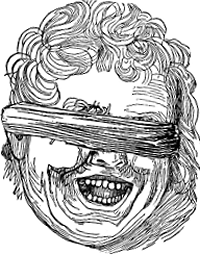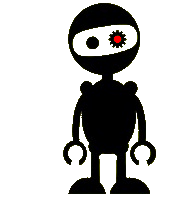 Joseph T Hallinan’s new book Kidding Ourselves says that not only is self deception more common and more powerful than we suppose, it’s actually helpful: deluded egoists beat realists every time.
Joseph T Hallinan’s new book Kidding Ourselves says that not only is self deception more common and more powerful than we suppose, it’s actually helpful: deluded egoists beat realists every time.
Philosophically, of course, self-deception is impossible. To deceive yourself you have to induce in yourself a belief in a proposition you know to be false. In other words you have to believe and disbelieve the same thing, which is contradictory. In practice self-deception of a looser kind is possible if there is some kind of separation between the deceiving and deceived self. So for example there might be separation over time: we set up a belief for ourselves which is based on certain conditions; later on we retain the belief but have forgotten the conditions that applied. Or the separation might be between conscious and unconscious, with our unrecognised biases and preferences causing us to believe things which we could not accept if we were to subject them to a full and rational examination. As another example, we might well call it self deception if we choose to behave as if we believed something which in fact we don’t believe.
Hallinan’s examples are a bit of a mixed bag, and many of them seem to be simple delusions rather than self-delusions. He recounts, for example the strange incident in 1944 when many of the citizens of a small town in Illinois began to believe they were being attacked by a man using gas – one that most probably never existed at all. It’s a peculiar case that certainly tells us something about human suggestibility, but apparently nothing about self-deception; there’s no reason to think these people knew all along that the gas man was a figment of their imaginations.
More trickily, he also tells a strange story about Stephen Jay Gould. A nineteenth century researcher called Morton claimed he had found differences in cranial capacity between ethnic groups. Gould looked again at the data and concluded that the results had been fudged: but he felt it was clear they had not been deliberately fudged. Morton had allowed his own prejudices to influence his interpretation of the data. So far so good; the strange sequel is that after Gould’s death a more searching examination which re-examined the original skulls measured by Morton found that there was nothing much wrong with his data. If anything, they concluded, it was Gould who had allowed prior expectations to colour his interpretation. A strange episode but at the end of the day it’s not completely clear to me that anyone deceived themselves. Gould, or so it seems, got it wrong, but was it really because of his prejudices or was that just a little twist the new researchers couldn’t resist throwing in?
Hallinan examines the well-established phenomenon of the placebo, a medicine which has no direct clinical effect but makes people better by the power of suggestion. He traces it back to Mesmer and beyond. Now of course people taking pink medicine don’t usually deceive themselves – they normally believe it is real medicine – otherwise it wouldn’t work? The really curious thing is that even in trials where patients were told they were getting a placebo, it still had a significant beneficial effect! What was the state of mind of these people? They did not believe it was real medicine, so they should not have believed it worked. But they knew that placebos worked, so they believed that if they believed in it it would have an effect; and somehow they performed the mental gymnastics needed to achieve some state of belief..?
Hallinan’s main point, though is the claim that unjustified optimism actually leads to better health and greater success; in sports, in business, wherever. In particular, people who blame themselves for failure do less well than those who blame factors outside their control. He quotes many studies, but there are in my view some issues about untangling the causality. It seems possible that in a lot of cases there were underlying causal factors which explain the correlation of doubt and failure.
Take insurance salesmen: apparently those who were most optimistic and self-exculpatory in their reasoning not only sold more, they were less likely to give up. But let’s consider two imaginary salesmen. One looks and sounds like George Clooney. He goes down a storm on the doorstep and even when he doesn’t make a sale he gets friendly, encouraging reactions. Of course he’s optimistic, and of course he’s successful, but his optimism and his success are caused by his charm, they do not cause each other. His colleague Scarface has a problem on one cheek that drags his eye down and mouth up, giving him an odd expression and slightly distorting his speech. On the doorstep people just don’t react so well; unfairly they feel uneasy with him and want to curtail the conversation. Scarface is pessimistic and does badly, but it’s not his pessimism that is the underlying problem.
Hallinan includes sensible disclaimers about his conclusions – he’s not proposing we all start trying to delude ourselves – but I fear his thesis might play into a widespread tendency to believe that failure and ill-health are the result of a lack of determination and hence in some sense the sufferer’s own fault: it would in my view be a shame to reinforce that bias.
There are of course deeper issues here; some would argue that our misreading of ourselves goes far beyond over-rating our sales skills: that systematic misreading of limited data is what causes us to think we have a conscious self in the first place…


